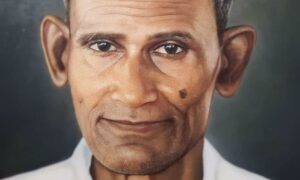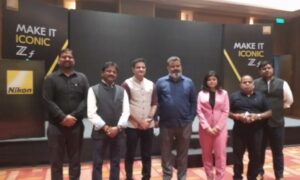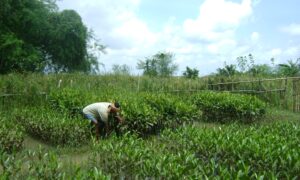Reaching out to tribals for more inclusive democracy

The Union tribal affairs ministry led by Jual Oram, created in 1999 during the Vajpayee regime, has a huge task of ameliorating the development deficits of the group.
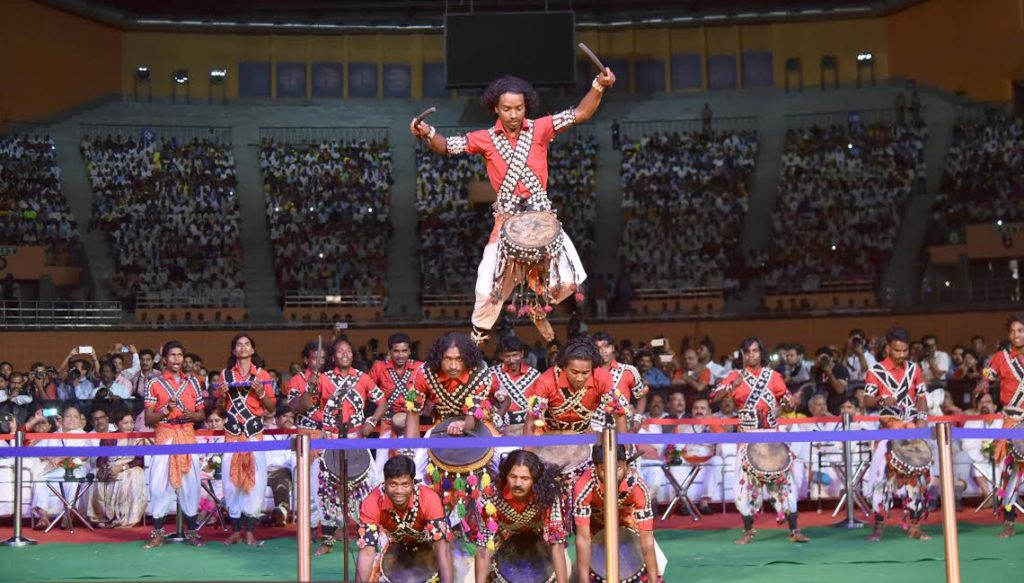
Glimpses of the Carnival parade at the inauguration of the National Tribal Carnival-2016, in New Delhi on October 25, 2016.
The Indian democracy’s unique beauty lies in its inherent capacity to accommodate and negotiate with the various distinct social categories.
The four-day National Tribal Carnival kicked off by Prime Minister Narendra Modi on October 25 in New Delhi opens up the window of opportunities for the government to creatively engage with the socially, economically and politically marginalized tribals – the ‘citizens at periphery’.
Tribals constitute 8.6% of the total population of India. Numerically, it is over 10.43 crore people. Around 90% of them live in rural areas.
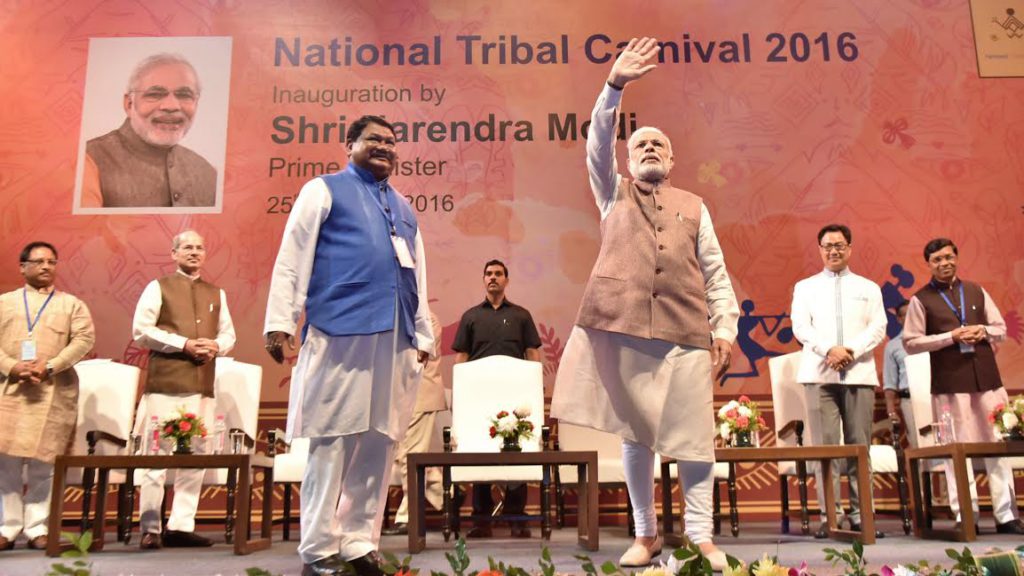
Prime Minister Narendra Modi at the inauguration of the National Tribal Carnival-2016, in New Delhi on October 25, 2016.
The Union Minister for Tribal Affairs Jual Oram, the Minister of State for Environment, Forest and Climate Change (Independent Charge) Anil Madhav Dave, the Minister of State for Steel Vishnu Deo Sai, the Minister of State for Agriculture and Farmers Welfare Sudarshan Bhagat and the Minister of State for Home Affairs Kiren Rijiju are also seen.
The tribal carnival, first of its kind, initiated with the intervention of Prime Minister Narendra Modi symbolizes the renewed intent of the central government in listening to the practical problems faced by the tribals over a long period of time.
It assumes significance at a time when the NDA government is being criticized by the opposition parties as well as tribal leaders for its “anti-tribal” attitude, especially in the case of acquiring land for development projects, public or private.
In the last two months, at least seven tribals have been killed during clashes with police over struggle for land in BJP ruled Jharkhand.
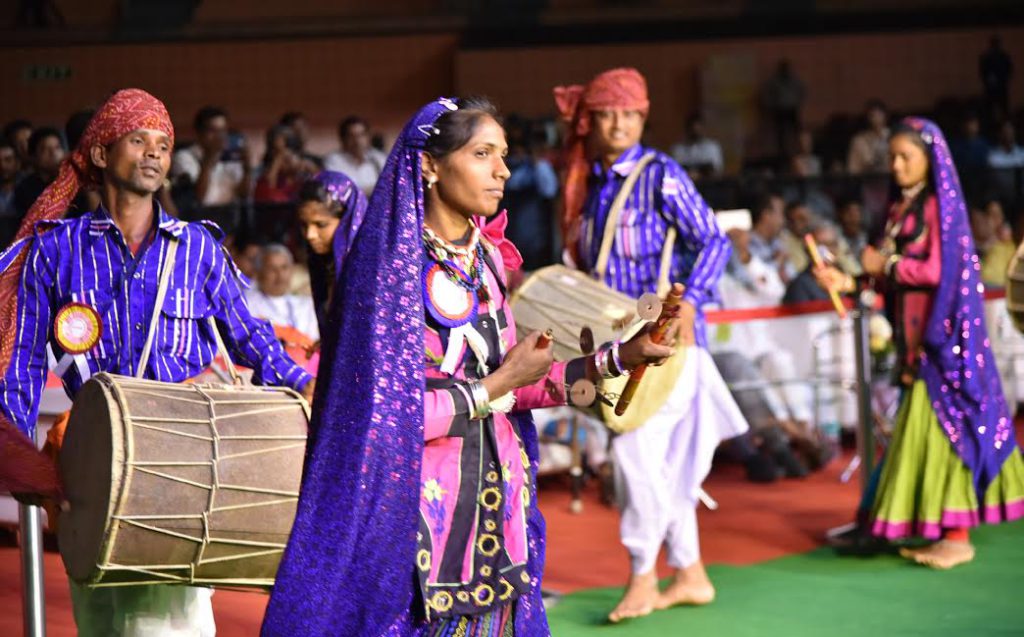
Glimpses of the Carnival parade at the inauguration of the National Tribal Carnival-2016, in New Delhi on October 25, 2016.
The tribal carnival intends to ‘create a sense of inclusiveness’ among other things. It will open up avenues for discussions on issues like PESA Act 1996, its benefits to the tribal community and implications of Forest Rights Act, 2006.
It will certainly help the government to revitalize its relationships and extent of engagements with the tribal communities.
In this context, it is pertinent to talk about the man who came all the way from England in the pre-independent India, literally fell in love with the country and even married a tribal girl in Madhya Pradesh.
He was Verrier Elwin. Elwin travelled to India to work with Christ Seva Sangh after completing his studies in Oxford.
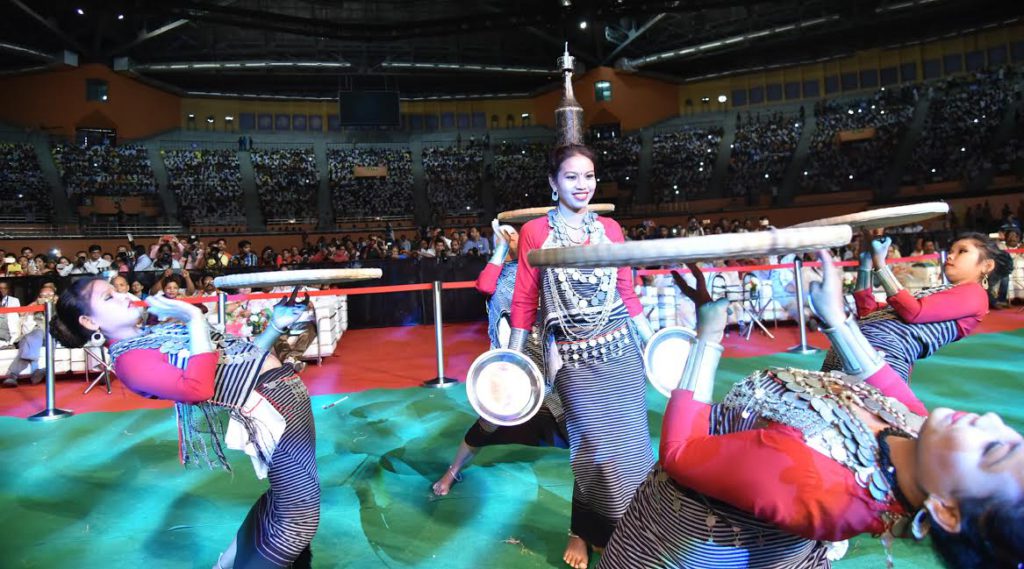
Glimpses of the Carnival parade at the inauguration of the National Tribal Carnival-2016, in New Delhi on October 25, 2016.
Long back in pre-independent India, Elwin highlighted the plight of tribes by saying, “hill and forest tribes were a despised and callously ignored group”.
After independence, the Union government headed by Jawaharlal Nehru sought his help in framing a robust policy for the all round development of the tribals.
And till today, Elwin’s guidance has remained the cornerstone of the tribal policy of the government. The idea of having the tribal carnival also reflects the Elwin doctrine of continuous engagement with the tribals.
The Union tribal affairs ministry led by Jual Oram, created in 1999 during the Vajpayee regime, has a huge task of ameliorating the development deficits of the group.

Prime Minister Narendra Modi at the inauguration of the National Tribal Carnival-2016, in New Delhi on October 25, 2016.
The Union Minister for Tribal Affairs Jual Oram, the Minister of State for Environment, Forest and Climate Change (Independent Charge) Anil Madhav Dave and the Minister of State for Home Affairs Kiren Rijiju are also seen.
Schemes by the ministry like the Special Central Assistance to Tribal Area Sub-plan (SCA to TSP) extend grants-in -aid to states for employment-cum-income generation activities and infrastructure work focuses centrally on improving social and economic status of the tribals.
The other notable scheme under the provision to Article 275(1) of the Constitution aims at creating critical infrastructure to bring the tribal areas at par with developed areas.
Going by the statistics, the total allocation of Rs.1040.01 crores for SCA to TSP in 2014-15 has been increased to Rs.1132.27 crore in 2015-16.
Similarly, in the category of assistance for schemes under provision to Article 275 (1), the total sanction amount stands increased at Rs.1392.78 crore in 2015-16 from Rs.1133.16 crore in 2014-15.
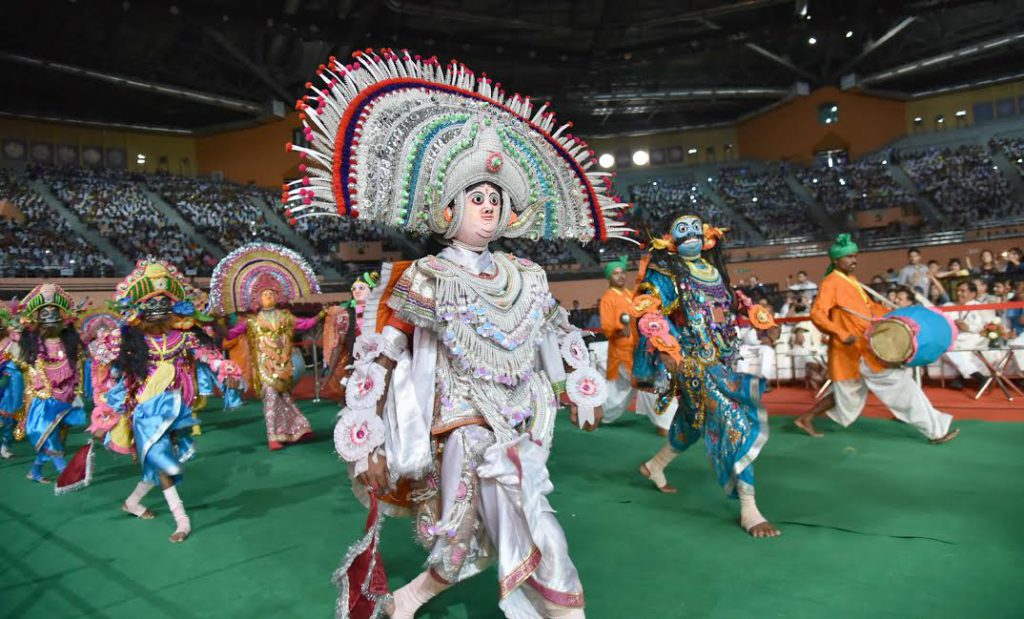
Glimpses of Carnival parade at the inauguration of the National Tribal Carnival-2016, in New Delhi on October 25, 2016.
It is important in this context to mention about Particular Vulnerable Tribal Group (PVTGs) some of whom are still at the pre-agriculture and hunting and food gathering stage.
This has emerged as the biggest challenge for the Indian democracy to ensure an all round development without compromising their unique identity and cultural heritage.
In the era of advanced globalization and rapid economic progress, it remains an irony of not being able to bring a group of marginalized people to the same level of other groups of people in India.

Glimpses of the Carnival parade at the inauguration of the National Tribal Carnival-2016, in New Delhi on October 25, 2016.
The reaching out of the Indian democracy in the tribal carnival format to its ‘citizens at periphery’ heralds a new beginning in recent times.
At the same time, it is expected to come out with the future road map towards a more inclusive Indian democracy.
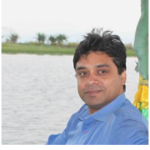
(The author is a policy analyst and can be reached at [email protected])

